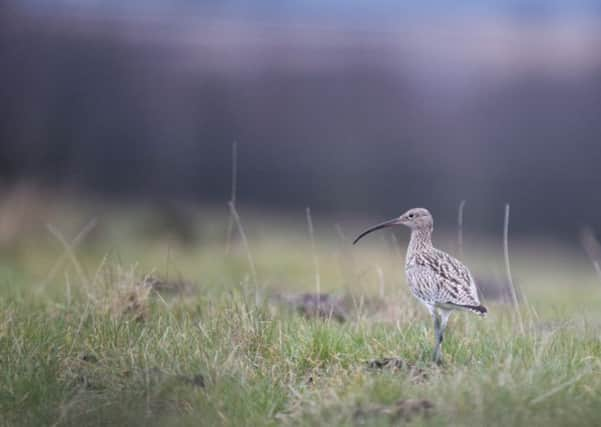Comment: Battle to save the curlew starts now


An enduring source of artistic inspiration, Robert Burns proclaimed he had “never heard the solitary whistle of curlew on a summer noon without feeling an elevation of soul, while the late Ted Hughes, proclaimed the curlew “a wet-footed god of the horizons”.
Both poets, I’m sure, would be horrified to discover that the Eurasian curlew is in serious trouble and that its UK breeding population could be extinct in a generation.
Advertisement
Hide AdAdvertisement
Hide AdAfter Russia and Finland, the UK is the most important country in the world for breeding curlews, hosting around a quarter of the global population. But since the mid-90s its numbers have almost halved. As it stands, they are on course to disappear from Wales and Northern Ireland, and their situation in England and Scotland is only marginally less perilous.
Consequently, the curlew is listed as globally Near Threatened on the International Union for Conservation of Nature’s Red List and has just been upgraded to red on the list of UK Birds of Conservation Concern. In simple terms, this means we’re in danger of losing them unless urgent action is taken now. Only one of the world’s eight species of curlew is thought to have a stable population. We believe we’ve already lost the Eskimo curlew and the slender-billed curlew forever. Our own Eurasian curlew must not be next.
There are two main reasons for this desperate situation. Firstly, around a sixth of the curlew’s suitable breeding habitat has been lost. Curlews like rough, damp vegetation of varying height and density. This provides them with places to nest, hide from predators and forage for food.
The loss of suitable habitat is due to diminishing wet grasslands in the lowlands and changes in upland agriculture. Paradoxically, curlews have suffered from both expansions in livestock, which has increased trampling of nests, and reductions in grazing, which has reduced the availability of vegetation with the necessary mix of height and density.
Advertisement
Hide AdAdvertisement
Hide AdThe second reason is predation of both eggs and chicks. For curlews to achieve a stable population they need to produce roughly one fledged chick per pair every two years. Our research and other studies have shown that they’re not meeting this minimum requirement and one cause of this is predation.
At the RSPB, we’ve launched a five year programme, which we hope will lay the foundations for the curlew’s recovery. Working at six key curlew sites across the UK including Eastern Moors near Sheffield, we’re undertaking a trial, which will test the response of breeding curlews to a combination of habitat work and predator control. This will help us identify what we need to do to help curlew breed more successfully.
Once we’ve figured this out, we need to work out how we inspire and enable land managers to make the necessary changes to help curlews in the wider countryside. This might include introduction of new wader-friendly options in the Countryside Stewardship Scheme.
The RSPB can’t save the curlew on its own and luckily, we don’t have to. Many others are equally committed to helping this charismatic bird. Several private landowners are working with us on the trial management and, as you read this, nature writer and producer Mary Colwell is walking 500 miles across the UK in aid of curlew conservation. On May 21, she’ll be joining us at Eastern Moors to see our curlew trial management work.
Advertisement
Hide AdAdvertisement
Hide AdLike Mary’s marathon walk, saving the curlew is going to be a long and arduous task but it’s one we can’t afford to fail. The future of the species depends on us getting this right.
Sarah Sanders manages the Curlew Recovery Programme at the RSPB.